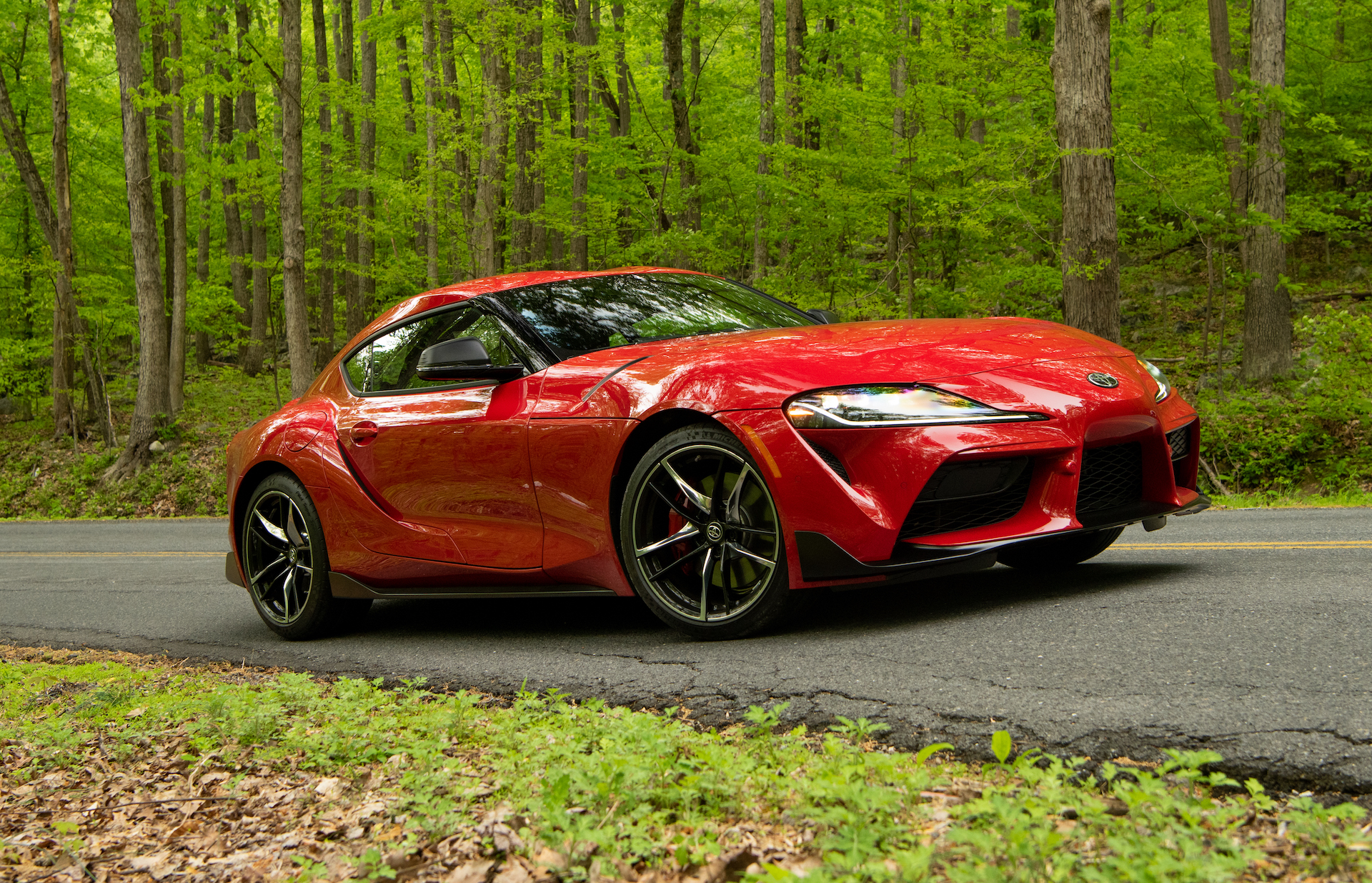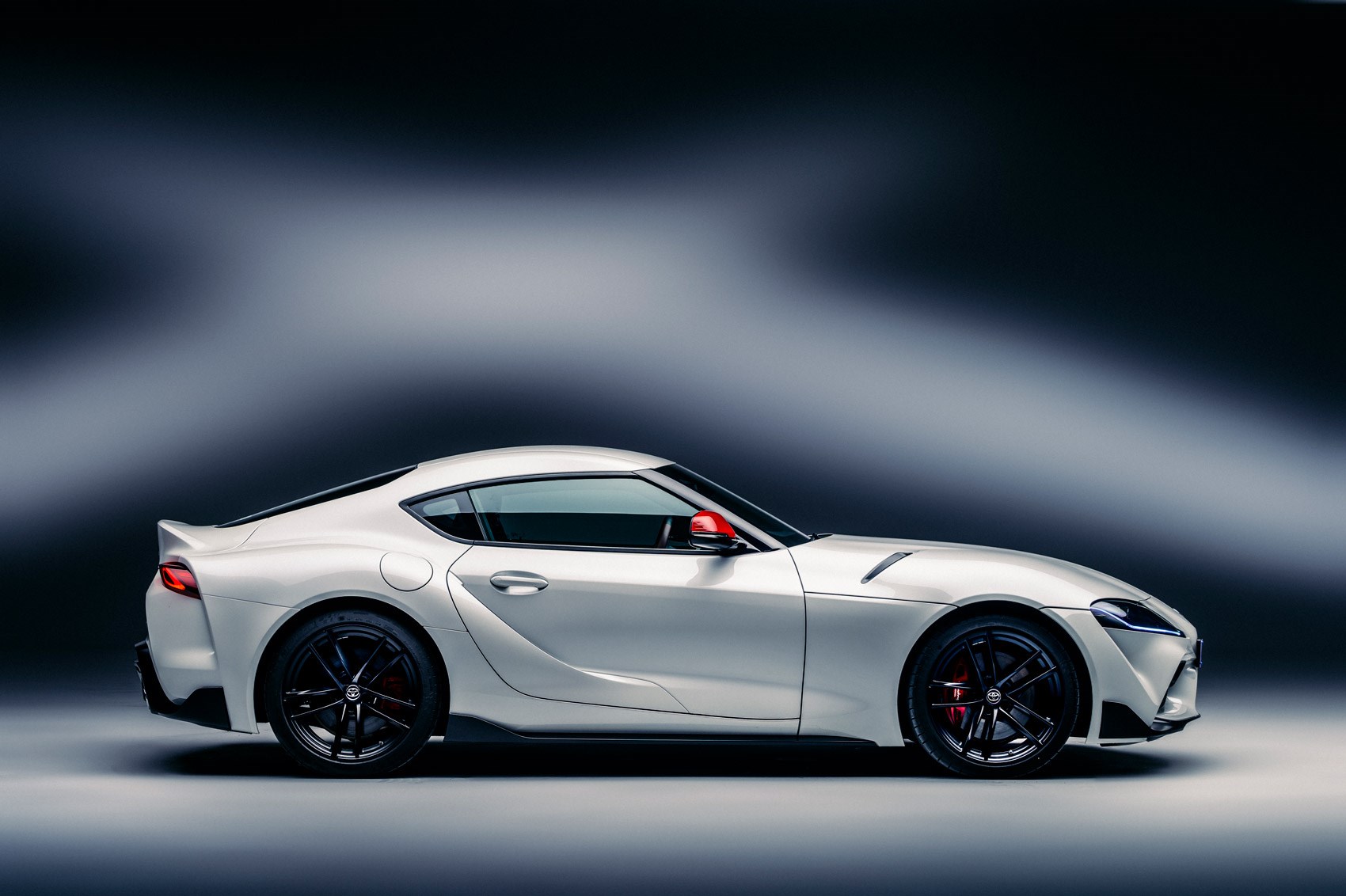The Supra’s design crams a lot of scoops, curves, and lines into a short hatchback coupe shape.
It’s bold and it draws attention, but we wouldn’t call it elegant. The interior is simple, though, to help the driver concentrate on the road.
The Supra uses BMW powertrains and a BMW structure. The 2.0 model is powered by a 2.0-liter turbo-4
that makes 255 hp and provides lively acceleration. Other models feature a turbocharged 3.0-liter inline-6 that
ramps up the output to 382 hp, delivers a 0-60 mph time under 4.0 seconds, and adds some emotion to the soundtrack.
Neither engine drinks too much fuel, and the 2.0 gets 28 mpg combined.
About 200 pounds less than 3.0 models, the Supra 2.0 feels light and nimble.
It has quick steering, and its 18-wheels and tires provide a decent ride.
The 3.0 models get more advanced components. They have 19-inch wheels and adaptive dampers that also do a decent job of
ironing out road imperfections. They also have an electronic limited-slip differential to help put the power down when exiting turns,
but it can also make the car feel unsteady in high-speed corners. No matter the model, the Supra is wide and short, with wide tires
and tenacious grip. The combination gives the Supra slot-car moves, especially in tight turns.
As a two-seater, the Supra has little space. Taller drivers will want more leg room, and everyone will
want more cargo room, with just 10.2 cubic feet in its hatchback hold. The cabin is built to a fine standard,
but its BMW-derived infotainment system is behind the times.
How much does the 2022 Toyota Supra cost?
The 2022 Supra 2.0 starts at $44,185, and the A91-CF Edition runs up to $64,275. The 2.0’s standard
equipment includes leather and Alcantara seats, keyless start, an 8.8-inch touchscreen, satellite radio, and 18-inch alloy wheels.
Standard safety features consist of automatic emergency braking and active lane control,
and buyers can also get blind-spot monitors, parking sensors, and adaptive cruise control.
Where is the Toyota Supra made?
It’s built in Austria.

